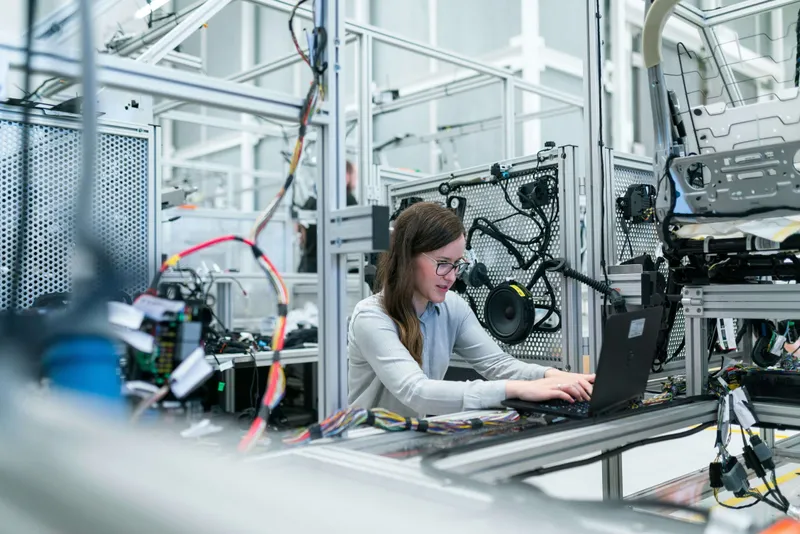Automate Business Process Reengineering (BPR)
Integration & Workflows
Redesign your business processes before you automate them. Make your workflows more efficient, eliminate waste, and ensure you're building automation on a solid foundation. Perfect for businesses implementing AI and automation.
The Power of Integration
Real results from businesses that automated their Business Process Reengineering (BPR) workflows
Average improvement in process efficiency after reengineering
Potential cost savings from optimized workflows
Of business processes can be significantly improved
To analyze and redesign most business processes
The Manual Integration Challenge
Common problems businesses face without automated Business Process Reengineering (BPR) integration
Automating Inefficient Processes
You're about to automate a business process, but it was designed for humans years ago. Automating a bad process just gives you a faster bad process. You need to rethink it first.
Human-Designed Workflows for AI
The way humans do work is completely different from how AI and computers work. What's easy for a human might be impossible for AI, and vice versa. Your workflows need to match the worker.
Mixed Human-AI Workflows
When processes involve both humans and AI working together, you need to design the handoffs carefully. Most businesses haven't thought through how people and automation should collaborate.
Lack of Process Documentation
Your team knows how things get done, but it's all tribal knowledge. Before you can improve or automate anything, you need to map out what's actually happening today.
Hidden Inefficiencies
We've always done it this way. But is this the best way? Most processes accumulate inefficiencies over time that nobody notices until you actually analyze them.
Strategic Process Questions
Should we even be doing this work? Sometimes the best process improvement is eliminating unnecessary work entirely. BPR helps you ask the hard questions.
What We Connect Business Process Reengineering (BPR) With
Seamlessly integrate Business Process Reengineering (BPR) with your existing business systems
Business Process Automation
After reengineering your processes, we can build the AI and automation solutions to execute them efficiently.
AI Implementation
Deploy AI tools and systems that are perfectly aligned with your reengineered workflows for maximum impact.
Workflow Optimization
Ongoing optimization and refinement of your processes as your business evolves and technology advances.
Digital Transformation
Complete business transformation combining process reengineering, automation, and cultural change.
Process Mining & Analytics
Use data analytics to continuously monitor and improve your business processes over time.
Change Management
Help your team adapt to new processes and ways of working with comprehensive change management.
Integration Capabilities
Everything we can automate with Business Process Reengineering (BPR) integration
Process Discovery & Mapping
We document how your business processes actually work today—not how they should work, but how they really work.
- Complete process flow diagrams
- Identify all stakeholders and systems
- Document decision points and exceptions
- Measure current performance metrics
Efficiency Analysis
We identify bottlenecks, redundancies, errors, and opportunities for improvement in your current processes.
- Bottleneck identification
- Error and risk analysis
- Time and cost measurement
- Waste elimination opportunities
AI-Readiness Assessment
Before automating, we evaluate which parts of your process are automation-ready and which need redesign.
- Automation opportunity scoring
- Human vs. AI task allocation
- Integration complexity assessment
- ROI estimation for automation
Workflow Redesign
We redesign your processes to be more efficient, whether they're staying manual, becoming automated, or becoming hybrid.
- Optimized process flows
- Elimination of unnecessary steps
- Parallel processing opportunities
- Future-proof design for growth
Human-AI Collaboration Design
For hybrid processes, we design the optimal collaboration between your team and AI automation.
- Clear handoff points defined
- Exception handling protocols
- Human oversight mechanisms
- AI decision boundaries
Implementation & Change Management
We help you roll out the reengineered process and get your team on board with the changes.
- Step-by-step implementation plan
- Team training and documentation
- Change management support
- Performance monitoring setup
Success Stories
Real businesses that automated their Business Process Reengineering (BPR) integrations

Manufacturing Company: Order Processing Reengineering
A mid-sized manufacturer was processing customer orders manually through 12 different steps across 3 departments, taking 2-3 days per order. We reengineered the process to eliminate 6 unnecessary steps, automated 4 others, and redesigned handoffs between departments. The new process takes 4 hours instead of 3 days, with 95% fewer errors. Before building any automation, we saved them 40% of processing time just through better process design.
83% faster processing
95% fewer errors
$120K annual savings
6 steps eliminated
What our clients say
Frequently Asked Questions
Everything you need to know about Business Process Reengineering (BPR) integration
What exactly is Business Process Reengineering (BPR)?
Business Process Reengineering is the practice of analyzing and redesigning your business workflows to make them more efficient, effective, and aligned with your goals. It's not just tweaking what you do—it's fundamentally rethinking whether you're doing things the best way possible. When you're implementing AI and automation, BPR ensures you're automating an optimized process, not just a faster version of an inefficient one.
When should we do BPR? Before or during automation?
Ideally before automation, but it's never too late. The best time to reengineer a process is before you automate it—that way you're building automation for an optimal workflow. But even if you've already automated some processes, BPR can help you identify improvements and redesign for better results. Think of it as "measure twice, cut once" for business automation.
Do we really need to reengineer, or can we just automate what we have?
You can automate your existing process, but you'll likely miss significant opportunities. Here's why: processes designed for humans often include workarounds, manual checks, and steps that only exist because of human limitations. When you bring in AI and automation, you have new capabilities—but also new constraints. BPR helps you redesign the process to take advantage of what automation does best while keeping humans in the loop where they add the most value.
How long does Business Process Reengineering take?
It depends on the complexity of your process, but most BPR projects take 2-4 weeks for discovery and redesign, then another 2-4 weeks for implementation and testing. Simple processes (like invoice approval) can be reengineered in a week. Complex processes involving multiple departments and systems (like order-to-cash) might take 6-8 weeks. We always start with a quick assessment to give you an accurate timeline.
What's the difference between BPR and BPM (Business Process Management)?
BPR is about redesigning and improving processes—it's a one-time transformation project. BPM is about ongoing management and optimization of processes over time. You typically do BPR first to get your processes optimized, then use BPM practices to keep them running smoothly and continuously improve them. Think of BPR as renovating your house, and BPM as regular maintenance and updates.
How much does Business Process Reengineering cost?
BPR costs vary based on process complexity and scope, but it's typically a fraction of what you'll save. Most projects range from $5,000 for simple single-process reengineering to $25,000+ for complex multi-department transformations. The ROI is usually 3-10x within the first year through time savings, error reduction, and efficiency gains. We provide a detailed cost-benefit analysis before starting any project.
What if our team resists the process changes?
Change management is built into our BPR approach. We involve your team in the discovery and design phases so they understand why changes are needed and have input on the solutions. We provide training, documentation, and support to make the transition smooth. Most resistance comes from fear of the unknown—when people see how the new process makes their work easier and more valuable, they become advocates.
Can you handle processes that involve both humans and AI?
Absolutely—this is where BPR provides the most value! Hybrid processes (part human, part AI) need careful design to ensure smooth handoffs, clear decision points, and proper oversight. We specialize in designing workflows where humans and AI collaborate effectively, with each doing what they do best. The result is better than either could achieve alone.
Ready to Reengineer Your Business Processes?
Get a free process assessment showing exactly how we'll analyze and redesign your workflows for maximum efficiency. See your custom BPR plan and ROI estimate before you commit to any automation.
✓ No credit card required • ✓ Free consultation • ✓ Custom integration roadmap











